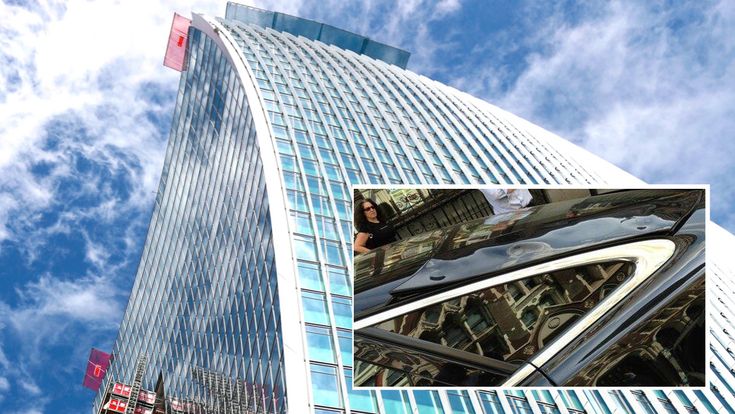20 Fenchurch Street is a London commercial skyscraper named after its address on Fenchurch Street in the historic City of London financial district. Because of its distinctive shape, which resembles a two-way radio handset, it has been dubbed The Walkie-Talkie. The building was constructed in spring 2014, and the three-story sky garden opened in January 2015. But did you know the building actually had a design flaw?
In London, the design of a skyscraper was melting cars and setting buildings on fire. The curvilinear shape was causing the issue: the south-facing exterior wall was covered in reflective glass, and because it was concave, it focused the sun’s rays on a small area.
What was the Design Flaw of the Skyscraper?
London isn’t known for its hot weather, but that could change soon, and not because of global warming: the design of a new skyscraper in the city is melting cars and catching fire.
It’s absolutely ruined. You can’t believe something like this would happen. They’ve got to do something about it.
Martin Lindsay, owner of a melted Jaguar XJ
Lindsay made the mistake of parking his luxury car for an hour across the street from the office building; the Jaguar now has melted panels, mirrors, and other parts.
Local business owners have complained about burning carpets and smoldering front doors. According to a restaurant owner in London, the slate tiles on his doorstep had shattered in the heat.
The structure, designed by internationally renowned architect Rafael Violy, is striking with curved exterior walls. The 38-story skyscraper at 20 Fenchurch Street in London’s financial district is known locally as the Walkie-Talkie due to its unusual shape.
The south-facing exterior wall is covered in reflective glass. Because it’s concave, it focuses the sun’s rays onto a small area, similar to how a magnifying glass directs sunbeams onto a superhot pinpoint of light.
It’s a concave shape, so it’s going to have a focusing effect on the light that is reflected from it.
James Keaveney, University of Durham’s Atomic and Molecular Physics
Solar power plants are designed with the same concave shape. A solar dish in New Mexico has 82 mirrors that focus sunlight onto a hydrogen-powered engine. The motion of the gas as it expands and contracts due to heating and cooling drives pistons, which power a generator, which generates electricity.
There’s also a power station in Spain that works on this principle; they have an array of mirrors that focuses light into a central pillar. If it’s 60 degrees Celsius, you could get solar panels and get some energy out of it.
James Keaveney, University of Durham’s Atomic and Molecular Physics
(Source: NBC News)
Rafael Viñoly’s Faulty Architecture
Rafael Violy’s design has raised eyebrows as well as temperatures: his Vdara Hotel in Las Vegas has been chastised for directing sunbeams onto the swimming pool deck that are hot enough to melt plastic and singe people’s hair. The hotspot was dubbed the Vdara death ray.
The Vdara mitigated the death ray with larger sun umbrellas, but resolving the London issue may require much more effort. (Source: NBC News)
Image from Pinterest
